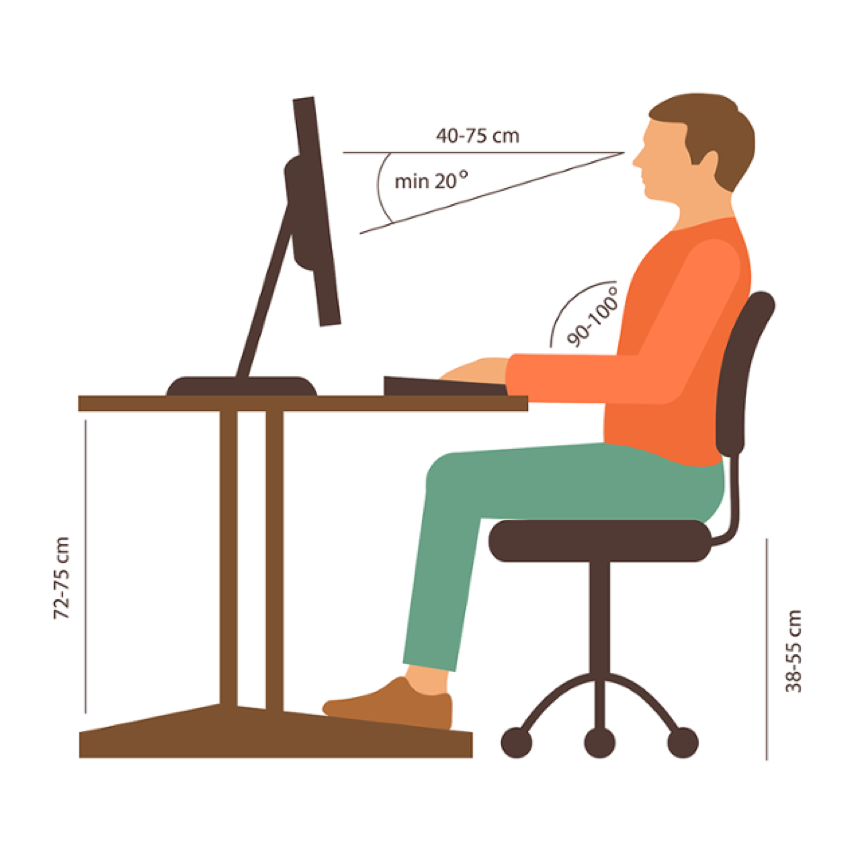
Nothing makes a day at the office more miserable than neck and back pain. However, a lot of us deal with it every day. Americans are spending $50 Billion dollars a year on lower back pain. Physical Therapy is an important part of recovery but also a standing desk can be part of the solution to some of that pain. First, let’s take a look at why we experience the pain we do while sitting, and then look at how a standing desk can help.
The Causes of Neck and Back Pain at Work
Ergonomics
This may sound funny, but most people don’t know how to sit at a desk. You probably don’t think much about it, but there’s a science to sitting at a desk and working at your computer correctly. The height and angles of your desk, keyboard, and computer screen can all contribute to neck and back pain.

Bad Posture
Sitting at a desk doesn’t promote a healthy posture. More than likely, when you sit, your back and shoulders are slumped and your neck and head are pushed forward. This position is the most common contributor to back and neck pain. The weight of your head pulling forward puts a tremendous stress on your neck and strains upper back muscles.
Sitting Too Long
If you’re sitting still for too long during the day, the discs between vertebrae in your spine are compressed unevenly and not able to expand or get nutrients. This results in your spine being less flexible and at a higher risk for disk damage. If you’re sitting all day, you’re putting between 40-90% more pressure on your back than you do when standing.
The Standing Desk Solution
Standing desks have helped people with neck and back pain as part of a rehab routine. If you’re not experiencing pain yet, then consider being proactive about your health and prevent it. Standing up releases the pressure on your neck and back and promotes a healthier posture. Studies show standing for just over an hour a day reduces neck and back pain by about 54%.
Some people still complain of back pain at work while using a standing desk. This goes back to ergonomics. If your desk, keyboard, and computer screen aren’t in a comfortable position, you’re still adding unnecessary strain on your body. A height-adjustable desk is an easy fix for this. It allows you pick the perfect desk height for you. Now, as sitting all the time causes increased back and neck pain, standing too long in one position has its own set of problems. Sit-to-stand desks are an option to conquer neck and back pain while taking care of the rest of your body. These desks allow you to easily transition between sitting and standing throughout the day. Standing gives you health benefits, including back and neck pain relief, and giving yourself breaks to sit down throughout the day keeps you from being in one position for too long. They often come motorized allowing you to adjust the height of your desk with the push of a button. Some have memory controls, so you can save your height settings. Finding a comfortable desk height is key getting the most out of your standing desk.
Choosing to work from an adjustable standing desk is a lifestyle choice that can quickly adjust your comfort level and prevent damage to your back and neck brought on by sitting. Relieving pain can mean a brand new attitude and more pleasant work experience, plus you get the added benefits of being more productive and improving your health in other ways. If you want to try this out, most places who sell office furniture also offer sit-stand desks. If you plan to start using a standing desk, it’s recommended you split your time 50-50 between standing and sitting.

